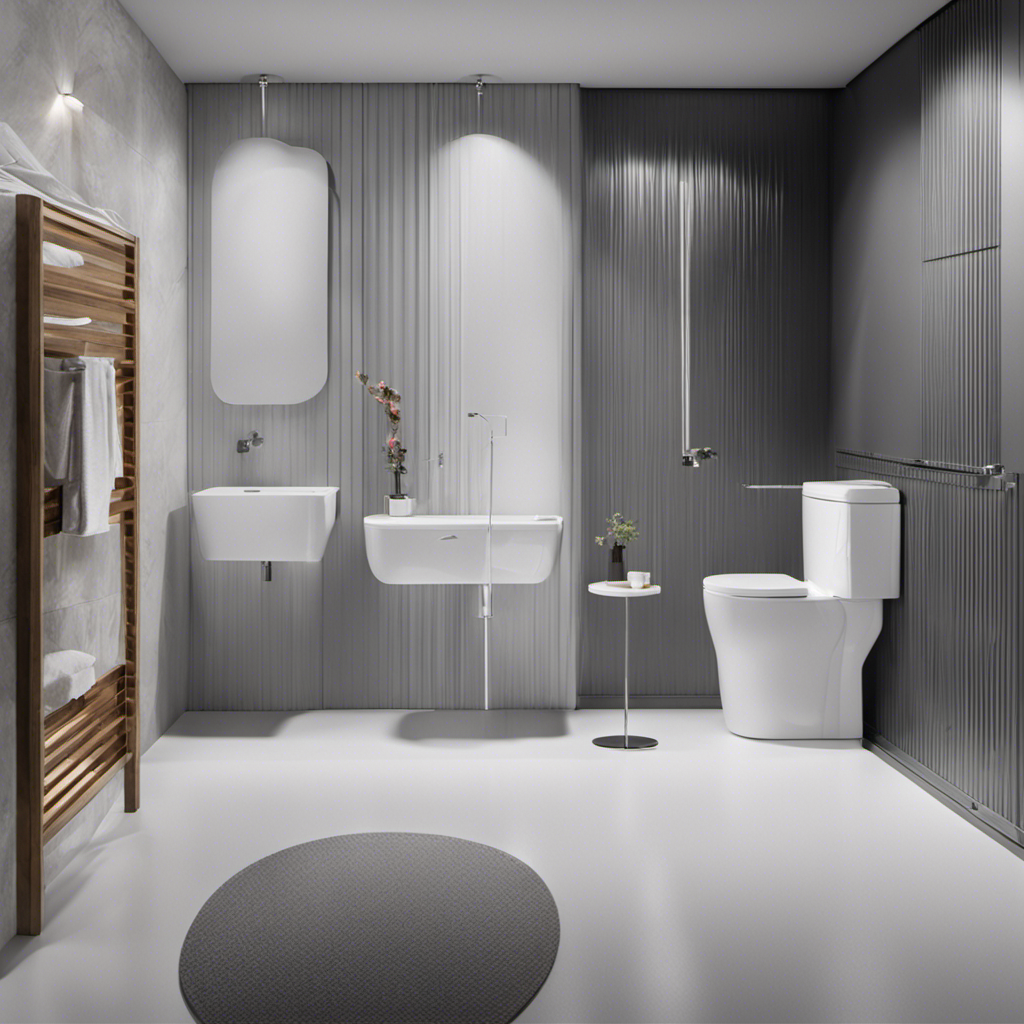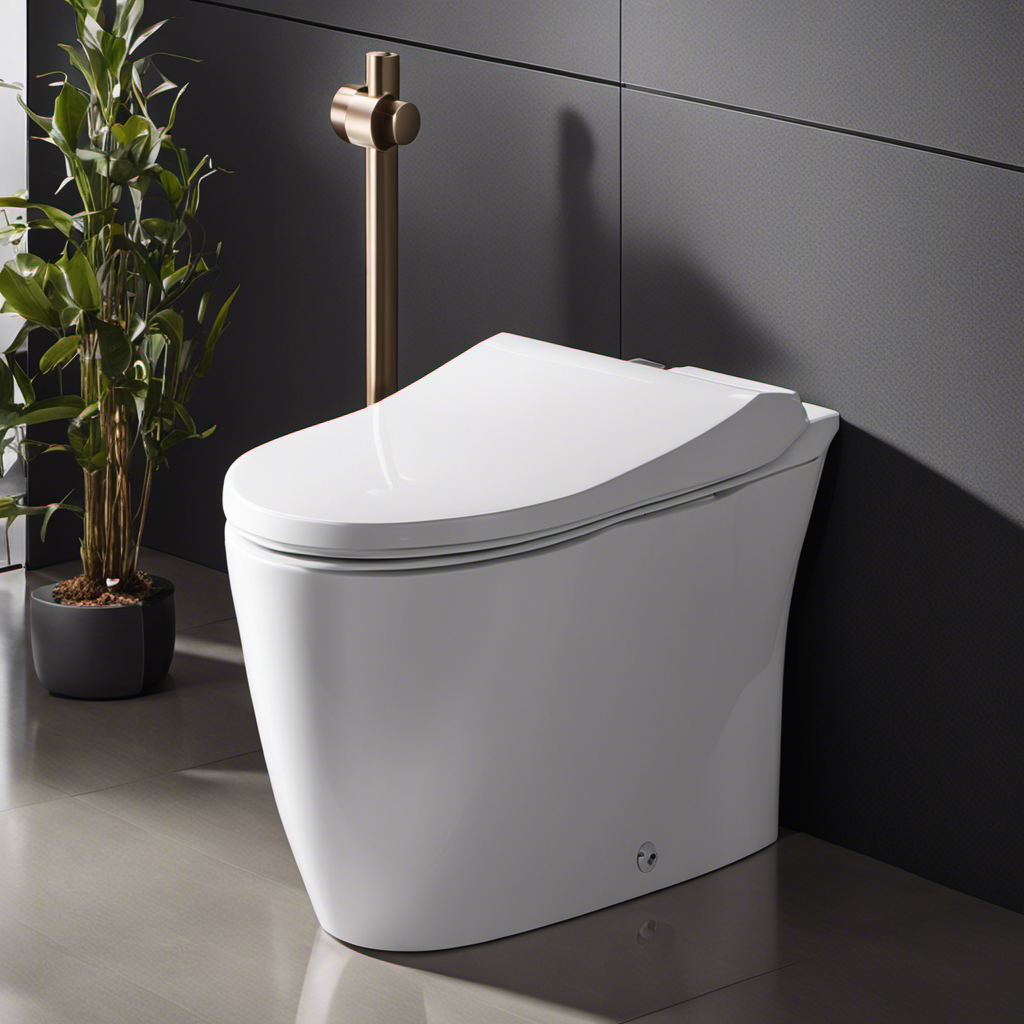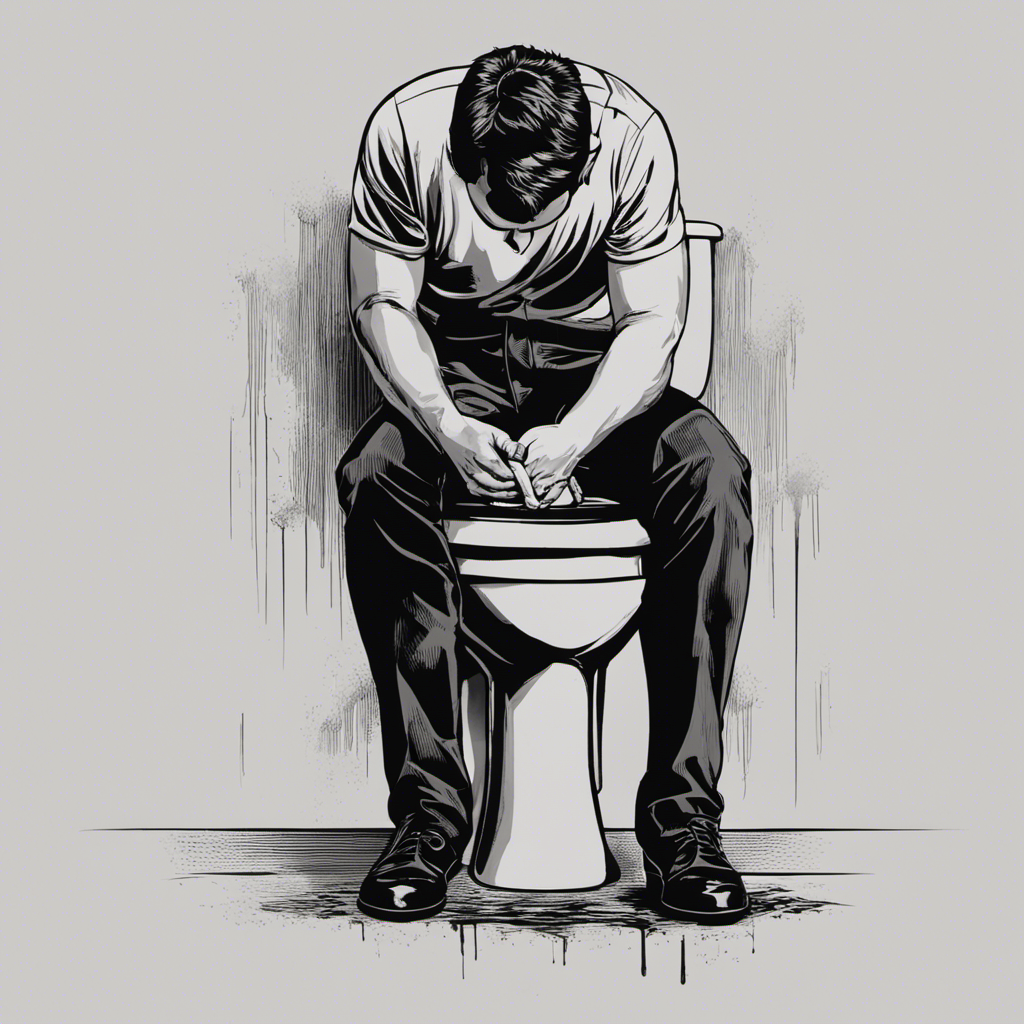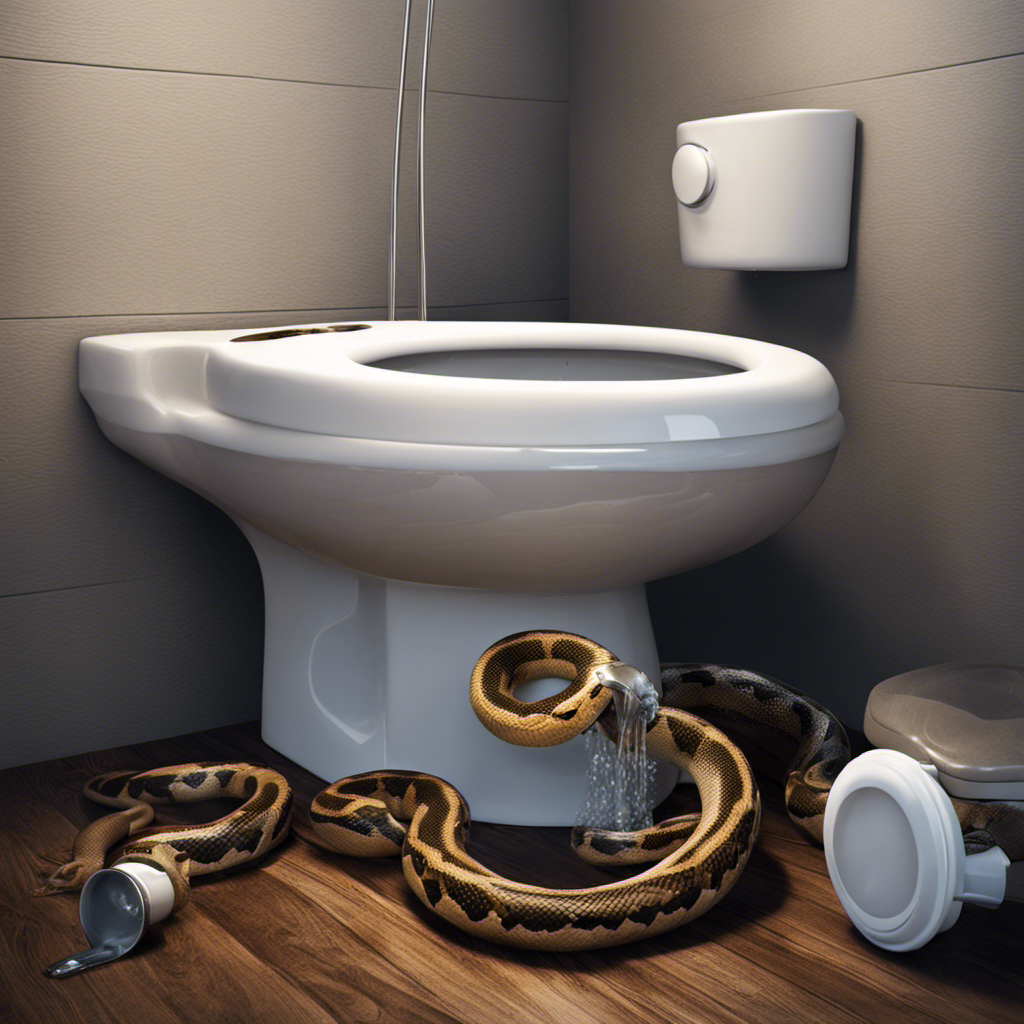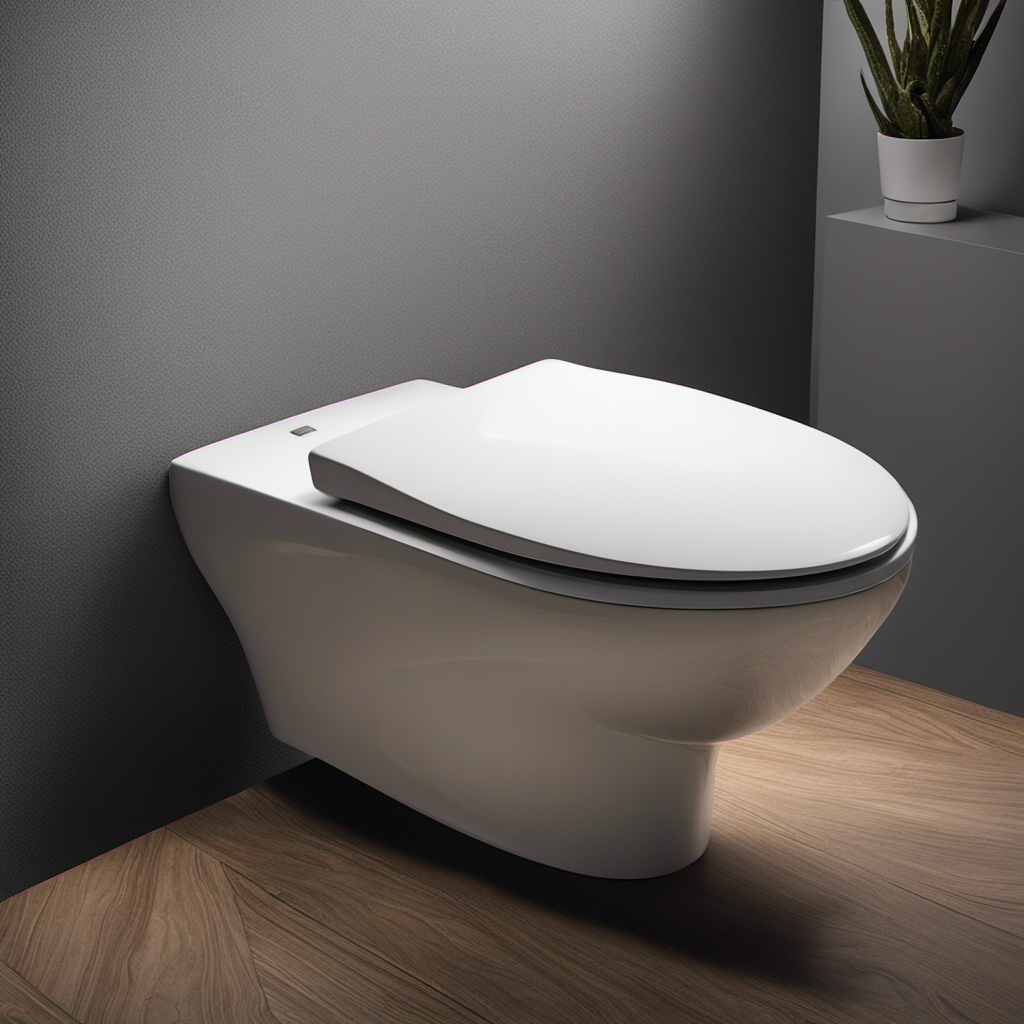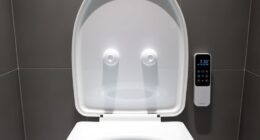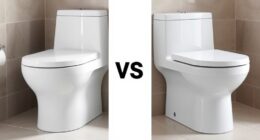Did you know that 27% of homeowners struggle with measuring their toilets for replacement? If you’re one of them, fear not! In this article, I will guide you through the step-by-step process of measuring your toilet for replacement.
By following these precise instructions, you’ll be able to determine the rough-in size, bowl shape, tank dimensions, clearance space, and mounting type with ease.
So let’s get started and ensure a seamless toilet replacement experience!
Key Takeaways
- The rough-in size, which is the distance between the wall and the center of the flange, is an important measurement to determine when replacing a toilet.
- The tank dimensions, including length, width, and height, should be measured to ensure the new toilet fits properly in the space.
- The bowl shape, whether round or elongated, should be chosen based on personal preference and compatibility with the toilet seat.
- The clearance space, including floor space, distance between walls and fixtures, and any obstructions, should be assessed to ensure proper installation of the new toilet.
Measuring the Rough-In Size
To measure the rough-in size, you’ll need to determine the distance between the wall behind the toilet and the center of the closet bolts. This measurement is crucial for finding the right replacement toilet that fits perfectly into your bathroom.
Start by locating the flange, which is the pipe that connects the toilet to the sewer line. The flange is usually set into the floor and secured with screws or bolts. Measure the distance from the wall to the center of the flange. This is your rough-in size.
Additionally, it’s important to determine the seat size of your current toilet. Measure the width and length of the seat to ensure your replacement toilet has a similar size.
Determining the Bowl Shape
When determining the bowl shape, it’s important to consider the curvature and dimensions. The bowl shape plays a crucial role in ensuring comfort and functionality. Here are some key points to keep in mind:
-
Round or Elongated: Choose the bowl shape that best suits your needs. Round bowls are compact and ideal for small spaces, while elongated bowls provide extra comfort.
-
Seat Compatibility: Ensure that the bowl shape matches the toilet seat you plan to install. Different seat styles are designed for specific bowl shapes.
-
Common Toilet Issues: Understanding common toilet issues can help you identify whether the bowl shape needs to be changed. Problems like leaking, clogging, or poor flushing may require a different bowl shape for optimal performance.
By considering these factors, you can choose the right bowl shape that meets your requirements.
Now, let’s move on to measuring the tank dimensions.
Measuring the Tank Dimensions
Measuring the tank dimensions can help determine the appropriate bowl shape for your needs. To accurately measure the tank, you will need to consider two key factors: the water capacity and the seat height. The water capacity refers to the amount of water the tank can hold, which affects the flushing power of the toilet. The seat height, on the other hand, determines the comfort and accessibility of the toilet. To measure the tank dimensions, use a tape measure and record the length, width, and height of the tank. Consider the following table to visualize the tank dimensions:
| Dimension | Length (inches) | Width (inches) | Height (inches) |
|---|---|---|---|
| Tank | 18 | 8 | 21 |
Once you have these measurements, you can move on to assessing the clearance space required for the toilet installation.
Assessing the Clearance Space
Make sure you assess the clearance space in your bathroom before installing the new toilet. This step is crucial to ensure that the new toilet will fit properly and function optimally.
Here are the key factors to consider when measuring the clearance space:
-
Measuring the floor space: Take accurate measurements of the area where the toilet will be placed. Consider the distance between the walls, the distance from the toilet to other fixtures, and any obstructions that may affect the installation.
-
Evaluating the water supply location: Determine the location of the water supply line and make sure it aligns with the new toilet’s water inlet. This will ensure proper connection and prevent any leaks or complications.
By carefully examining the clearance space and taking precise measurements, you can avoid any installation issues and ensure a smooth replacement process.
Now, let’s move on to the next step of checking the mounting type.
Checking the Mounting Type
To determine the mounting type for your new toilet, check if it uses floor mounting or wall mounting. This is crucial for ensuring mounting compatibility and a secure installation. Floor-mounted toilets are the most common type, where the toilet is bolted directly to the floor. On the other hand, wall-mounted toilets are attached to a carrier system that is anchored to the wall.
To help you understand the different mounting types and their weight capacities, refer to the table below:
| Mounting Type | Weight Capacity |
|---|---|
| Floor Mounting | Up to 1000 lbs |
| Wall Mounting | Up to 500 lbs |
It’s important to consider the weight capacity of the mounting system, especially if you have a heavier or more robust toilet. Ensure that the mounting type you choose can support the weight of the toilet and provide a stable and safe installation.
Frequently Asked Questions
What Are Some Common Toilet Bowl Shapes and Their Advantages or Disadvantages?
Round and elongated are the two common toilet bowl shapes. Round toilets are compact, suitable for small spaces, but less comfortable. Elongated toilets offer more seating area, provide better comfort, but require more space.
Can I Install a Toilet With a Different Rough-In Size Than My Current One?
Yes, you can install a toilet with a different rough-in size than your current one. However, it may require additional plumbing work and adjustments to ensure proper fit and functionality.
How Do I Measure the Height of a Toilet to Ensure It Fits Under My Bathroom Countertop or Vanity?
To measure the height of a toilet for a perfect fit under a bathroom countertop or vanity, measure from the floor to the top of the tank. This will ensure you find a toilet that fits seamlessly.
Are There Any Specific Building Codes or Regulations I Need to Consider When Replacing a Toilet?
When replacing a toilet, it’s crucial to adhere to specific building codes and regulations. Important considerations for older homes include ensuring proper rough-in measurements, water supply connections, and venting requirements.
What Are the Different Types of Toilet Mounting Systems Available and Which One Is the Most Suitable for My Bathroom?
To determine the most suitable toilet mounting system for your bathroom, consider the type of toilet flange and whether it is suitable for floor mounted toilets. Proper measurement is crucial for a successful replacement.
Conclusion
In conclusion, measuring a toilet for replacement requires meticulous attention to detail.
From determining the rough-in size to assessing the clearance space and checking the mounting type, every step is crucial in ensuring a perfect fit.
Like a skilled architect measuring the dimensions of a grand structure, we must carefully measure the toilet to guarantee a flawless replacement.
Just as each piece of the puzzle fits together seamlessly, so too must our measurements align perfectly for a successful toilet replacement.
